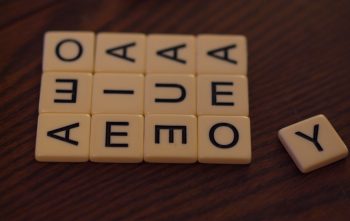Improving your Esperanto pronunciation – vowels Posted by Tomaso on Jun 12, 2017 in Esperanto Language
How many vowels are there, really?
When we (English speakers) learn about vowels in school, we learn that there are five vowels – A E I O U (and sometimes Y). In fact, depending on the dialect, English has 15-20 vowel sounds. This can make learning English pronunciation difficult to learn without a native teacher. Fortunately for Esperanto learners, there really are just five vowels and five vowel sounds in Esperanto. This makes it much easier to learn the correct pronunciation on your own.
Not as easy as it sounds
The five vowel sounds in Esperanto are often described as follows:
- A as in father
- E as in get
- I as in machine
- O as in hope
- U like the oo in too
This sounds simple. Why is it then when so many learners contact me for lessons via Skype (or other video tool), they have a good command of the grammar and vocabulary of Esperanto, yet make so many mistakes with vowels? This is such a common problem among English speaking learners, it would pay to focus on the question from the beginning.
English often doesn’t help
One problem is that we’re sometimes led astray by similar words in English and Esperanto. Ofte might look like “often” and mean about the same thing, but it’s not pronounced “awfte”. Make sure that when you say ofte, that it starts out with a nice round O sound like the O in “hope”. Similarly, with havas. The word might look like “have” and mean the same thing, but havas is not pronounced “have-ahs”
Another problem is that Esperanto vowels are not like English vowels. Esperanto vowels are often described as “pure.” That is, there’s not a lot of movement that goes on within them. English vowels are all over the place. Some people can draw a word like “bow” out so long that it sounds like two syllables. When we say the final syllable of knabo, it should be one vowel sound without the the final W sound of “bow”.
The AEIOU song at about 6 minutes into this video has models of how the vowels should sound.
https://youtu.be/1OQ-VRCpNR4?t=5m57s
Practice makes perfect
I’ve prepared a short list of words each of which only use one vowel sound. The idea is to pronounce the words carefully with all the A sounds the same, all the E sounds the same, all the I sounds the same, and so on. If a letter appears twice in a word, it should be pronounced the same both times.
- faras (does)
- havas (has)
- mankas (lacks)
- granda (big)
- revene (on the way back)
- nepre (without fail)
- ĝene (annoyingly)
- strebe (with effort)
- fidis (trusted)
- ridi (to laugh)
- svingis (swung)
- piki (sting)
- koko (chicken)
- provokos (will provoke)
- popolo (people)
- konsolos (will console)
- rulu (roll!)
- brulus (would burn)
- zumu (buzz!)
- kurus (would run)
Once you’ve worked on this list as it is, you can do it again pronouncing all vowels as A, then all vowels as E, and so on. While it’s true that feres, hovos, minkis, grindi, and ravana are not real Esperanto words, it’s still good practice. Make sure that with each pass, you’re pronouncing each vowel the same way the whole way through. It shouldn’t be necessary to move your mouth except to make the consonant sounds.
Bonan lernadon!

Build vocabulary, practice pronunciation, and more with Transparent Language Online. Available anytime, anywhere, on any device.





Comments:
inga johansson:
Mi dankas pro ” Short list of words”. Mi kopiis kaj certe uzos je miaj kursoj fine de junio kaj augusto.
Jen mi sendas al vi memorilon de la tuta alfabeto.
https://eoenssat.files.wordpress.com/2015/02/alfabeto.pdf
Uzu kiam vi instruos venontfoje.
inga johansson:
Mi trovis bonan klarigon de la alfabeto
https://www.youtube.com/watch?v=4wvOsT-Nju4
Tomaso:
@inga johansson Estas bone vidi ke Charlotte refoje faras filmetojn.